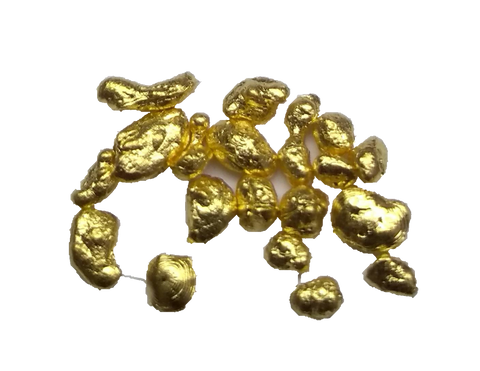Ever wondered what jewellers mean by 18 karat gold? And how is it different from 14 karat or 9 karat gold? Get your answers here.
Unlike carat used for measuring diamond and gem weights, the word karat in reference to gold stems from greco-roman times. Both the Greek and the Romans had a similar measure of weight. The Romans called it Solidius. A solidius was broken down into 24 karats and a karat equalled 4 grains.

The link to the weight of the Solidius (approx 327 grams) has since been lost and now karat represents a measurement of the ratio of gold to other metals or alloys. Karat is measured on a scale of 0 to 24. The bigger the number the higher the gold content gold, where 24 karat is the highest – eg. pure gold.
Why blend gold with other metals?
Pure 24k gold is quite soft and malleable. This makes it unsuitable for making durable jewellery or coins. However if we add other metals to pure gold, it changes the properties of the metal, making it harder wearing and suitable for fine jewellery and coins.
 24 Karat Gold Casting Grain
24 Karat Gold Casting GrainGenerally speaking, we add a combination of pure silver and pure copper, though sometimes we add palladium. Nickel is no longer used as it can cause allergic reactions.
Notes for buying gold jewellery
In summary, karat in reference to gold indicates the proportion of pure gold to other metals in your piece of jewellery. This has an effect on the appearance of the gold as well as the price and quality:
| Number of karats | Content | Copper & Silver Content | Appearance |
|---|---|---|---|
| 24K | 24/24 | 0/24 | Orangy-yellow |
| 18k | 18/24 | 6/24 | Buttery yellow |
| 14k | 14/24 | 10/24 | Straw yellow |
| 9k | 9/24 | 15/24 | Pale yellow |
The price of gold is determined by the gold purity. As you may have guessed already, the higher the gold content, the more expensive the metal.
To a certain extent the gold purity also says something about the quality of the jewellery, In Europe most fine jewellery is made in 18k or sometimes 14k gold, especially in the northern countries like Germany and The Netherlands. In the UK and Ireland 9k gold is also prevalent and is frequently used in antique and contemporary semi-fine jewellery.
Are there other measures of gold proportions?
Yes, the karat scale is one way of expressing the measure of gold content. Another measure is called Millesimal Fineness, which is a measure of parts per 1000. Pure gold (24 karat) is marked as 999. Why not 1000? Essentially because, even with a chemical refining process, there are always minute traces of other elements in the metal, so we say 999.
Here’s a quick comparison between the two systems :
| Number of carats | Parts of gold | % of purity | Millesimal Fineness |
|---|---|---|---|
| 24K | 24/24 | 99.9% | 999 |
| 18k | 18/24 | 75.0% | 750 |
| 14k | 14/24 | 58.3% | 583 |
| 9k | 9/24 | 37.5% | 375 |
Assay offices generally use the Millesimal Fineness when hallmarking jewellery and bullion rather than the karat scale.
Are there other karats to consider?
Other countries use different karat weights. The reasons are often socio-economic or historical. Regardless of the preferred or legally acceptable karat weights in different countries they all use the same systems for measuring gold purity – karat or millesimal fineness.
Examples of other common carat weights are:
- 22K prevalent in the Middle East and Asia
- 15K often found in antique jewellery (UK)
- 10K common in USA
I hope you enjoyed this post and will check back next week for a discussion on gold colour.




